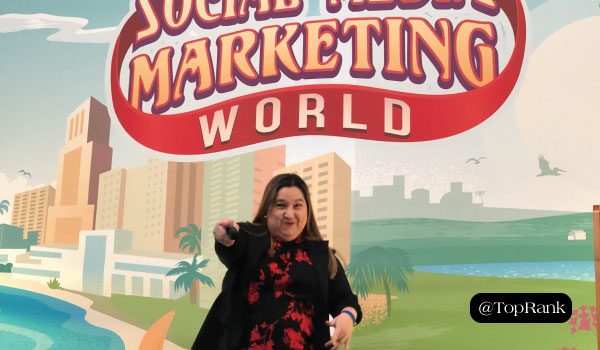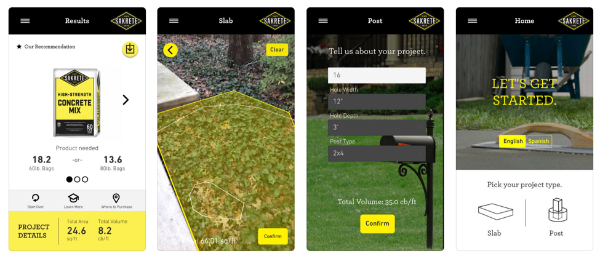
What do you think of when you think of augmented reality?
If you’re anything like me, you first thought of Snapchat filters, Pokemon Go, or the useful measuring tape app you have on your phone.
Augmented reality (AR) and applying it to marketing campaigns is still a little bit of a mystery. It’s not as popular as other tactics, but it’s attractive because it creates more immersive experiences for customers. As a marketer, it’s something I need to learn a bit more about.
Because of this, Cathy Hackl’s session at Social Media Marketing World 2019 immediately caught my eye. As an AR technology thought leader and futurist, Cathy was able to give insight into how marketers can weave augmented reality into the marketing mix. Below, I share the top takeaways from her session.
Augmented Reality Is for All Areas of Marketing
Augmented reality isn’t for social media. It isn’t for video, content, or paid. AR is for all of it. It’s an environment where we can place our digital content in our everyday lives. For marketers, you can quickly see the value of being able to place your content into your customers’ reality. And that value applies to more than just social messages, videos, content, etc.
In fact, Cathy (and other leaders like Mark Zuckerberg) believes AR will revolutionize business the same way that computers and cell phones have. Too often, we think of VR and AR as new pieces of software. In reality, they’re spatial computing platforms that are much more impactful than we give them credit for.
5 Examples of Adding AR Into Your Marketing Mix
What does AR in marketing look like? Cathy had some great examples.
#1 – Packaging
Packing is just a container, right? With AR, that’s no longer true. For example, Cathy made an AR environment that made a box of animal crackers come to life. You could dry the animals off, give them milk, and more. While it sounds like you’re just playing with your food, you’re having an interactive, immersive, fun experience with those animal crackers that’s impossible without AR.
I couldn’t find a video of Cathy’s animal cracker example, but here’s a good one from SIG and W-in-a-Box:
[youtube https://www.youtube.com/watch?v=8NNYgCks72I]
#2 – Visualization
Buying a car usually involves just telling your dealer what packages and features you want and the ones you don’t. But with AR, you can place the car in your customer’s reality and allow them to design and experience their new cars while at home.
It isn’t just for cars, either.
Visualization helps interior designers, retailers, clothing stores, etc. For example, Victoria Beckham used AR so people could “try on” her new sunglasses without purchasing them. Wayfair also is doing something similar by allowing customers to place their products throughout their home to see if they’ll like the final look. This helps customers feel more confident about their purchases, making it less likely that they’ll return something.
[youtube https://www.youtube.com/watch?v=BrZUEL3LJtU]
#3 – Calculators
AR isn’t all visualization, it can also be highly functional. For example, Cathy and You Are Here Labs made a measuring tool for a concrete company. To help save their customers (contractors) time, they created an AR app that would measure the space of their projects and calculate the amount of concrete they would need and where to buy it. This drastically reduced the measuring time for contractors and reduced friction in the buyer journey.

#4 – Training
The spatial computing of AR and VR allows for the creation of whole environments. And in industries like logistics, this presents a unique opportunity for training. For example, UPS created a VR and AR driving environment to train their new drivers. It was an interactive, fun experience with low liability and great engagement.
[youtube https://www.youtube.com/watch?v=fypGVcmWpnU]
#5 – Assistants
“What will the Alexa or Siri of the future look like?” Cathy asked. The answer? Anything we want.
With AR and VR, brands can transform their virtual assistants or chatbots into digital people that are “present” in reality. It takes being an assistant or chatbot several steps further, making them physical manifestations instead of robotic voices or text strings.
Reducing Friction
Cathy convinced me AR is about to become very, very big by proving one thing: AR reduces friction on the customer journey. If I’ve learned anything during my time in marketing, it’s that reducing friction needs to be a marketer’s (and a business’) No. 1 goal. And AR can help us eliminate that friction with new ways of shopping, interacting, visualizing, and more.
If this piqued your interest, too, Cathy shared some free tools that where you can get started:
- Snapchat Lens Studio
- Spark AR
- Amazon Sumerian
- Omnivert 3D Photo Creator
- Torch AR App
AR and VR were one of our top digital marketing trends for 2019. See the rest of the list from TopRank CEO, Lee Odden.

Comments are Closed